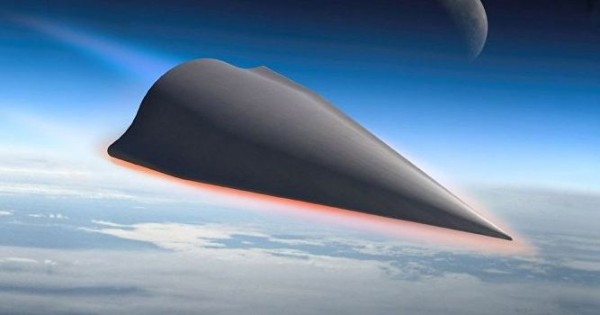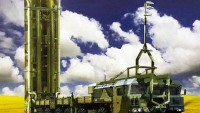Russia Claims Deployment of 'Sarmat' Heavy ICBM with 16 Nukes by 2018
| Arthur Dominic Villasanta | | Oct 20, 2016 07:13 PM EDT |
(Photo : TASS) Russian hypersonic glide vehicle warhead.
Russia continues to forge ahead with developing its new super-heavy RS-28 Sarmat intercontinental ballistic missile (ICBM) while also working on its revolutionary warhead -- a hypersonic nuclear glide vehicle and nuclear warhead.
Sarmat is designed to be far ahead of United States' missile systems, specifically Prompt Global Strike (PGS). This U.S. system (still in development) plans to deliver a precision-guided conventional weapon anywhere in the world within one hour.
Like Us on Facebook
The PGS program is looking at using conventional surface-launched missiles and air- and submarine-launched hypersonic missiles, but the most interesting is the Advanced Hypersonic Weapon (AHW) glide vehicle successfully tested in 2011.
Some Russian analysts believe Sarmat will comprise 100% of Russia's silo-based ICBM force. Sarmat will have a range of 10,000 kilometers and a speed of Mach 20 (24,500 km/h).
Russia optimistically announced an initial deployment of Sarmat in 2018, two years ahead of schedule despite reports to the contrary from western sources. Western military analysts, however, said the more realistic deployment date is 2020 considering new production of the missile is confirmed as behind schedule.
Sarmat will replace the RS-36 ICBMs and space launch vehicles that entered service in the 1970s and 1980s. Sarmat is being developed by the Makeyev Rocket Design Bureau in the city of Miass east of the Ural Mountains.
The missile can be armed with up to 10 heavy warheads, or 16 lighter ones, or a combination of warheads and countermeasures to defeat U.S. anti-missile defense systems.
Of special interest, however, is "Project 4202," part of which is the Yu-71, a maneuvering hypersonic glide vehicle (HGV) or warhead that can accelerate to speeds between Mach 7 and Mach 12. Yu-71's maneuverability will allow it to overcome any existing or prospective U.S. anti-missile defense.
Russia military analysts surmise that if Russia can develop a Yu-71 into a Mach 12 boost and glide HGV, state-of-the-art U.S. anti-missile defense systems will be absolutely impotent against it. Project 4202 will also render ineffective planned U.S. anti-missile systems and those not yet developed.
Russian sources said tests of Project 4202 are being carried out using obsolete RS-18B Stiletto ICBMs that boost the HGVs in flight.
Once Project 4202 becomes operational, it will arm the RS-28 Sarmat as and future versions of this ICBM. These improved Sarmats are expected to appear from 2020 through 2025. Russia plans to first produce 20 Yu-71s.
TagsRS-28 Sarmat, intercontinental ballistic missile, ICBM, Prompt Global Strike, Project 4202, Yu-71
©2015 Chinatopix All rights reserved. Do not reproduce without permission
EDITOR'S PICKS
-

Did the Trump administration just announce plans for a trade war with ‘hostile’ China and Russia?
-

US Senate passes Taiwan travel bill slammed by China
-

As Yan Sihong’s family grieves, here are other Chinese students who went missing abroad. Some have never been found
-

Beijing blasts Western critics who ‘smear China’ with the term sharp power
-

China Envoy Seeks to Defuse Tensions With U.S. as a Trade War Brews
-

Singapore's Deputy PM Provides Bitcoin Vote of Confidence Amid China's Blanket Bans
-

China warns investors over risks in overseas virtual currency trading
-

Chinese government most trustworthy: survey
-

Kashima Antlers On Course For Back-To-Back Titles
MOST POPULAR
LATEST NEWS
Zhou Yongkang: China's Former Security Chief Sentenced to Life in Prison

China's former Chief of the Ministry of Public Security, Zhou Yongkang, has been given a life sentence after he was found guilty of abusing his office, bribery and deliberately ... Full Article
TRENDING STORY

China Pork Prices Expected to Stabilize As The Supplies Recover

Elephone P9000 Smartphone is now on Sale on Amazon India

There's a Big Chance Cliffhangers Won't Still Be Resolved When Grey's Anatomy Season 13 Returns

Supreme Court Ruled on Samsung vs Apple Dispute for Patent Infringement

Microsoft Surface Pro 5 Rumors and Release Date: What is the Latest?














